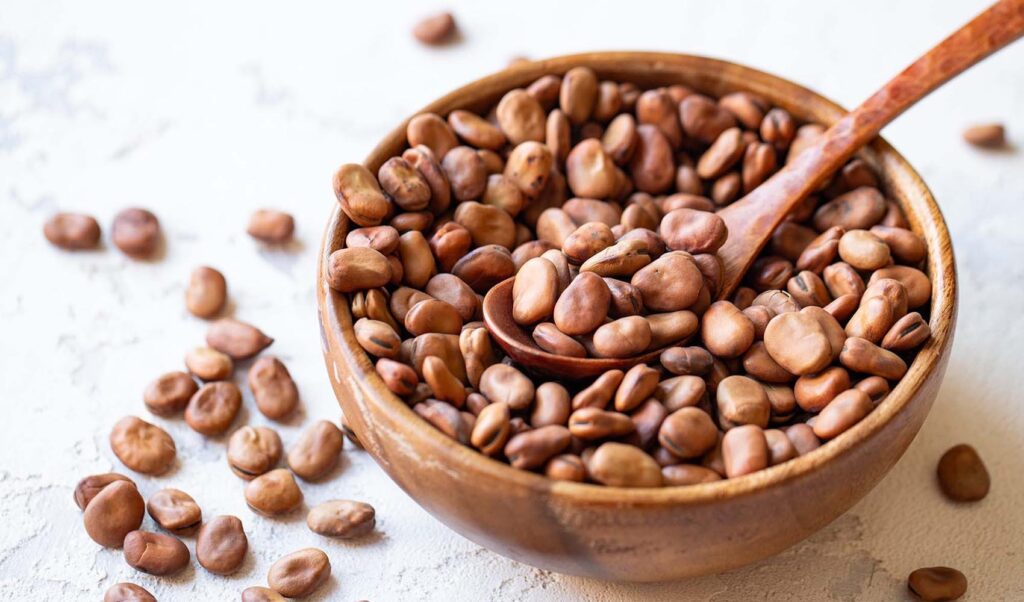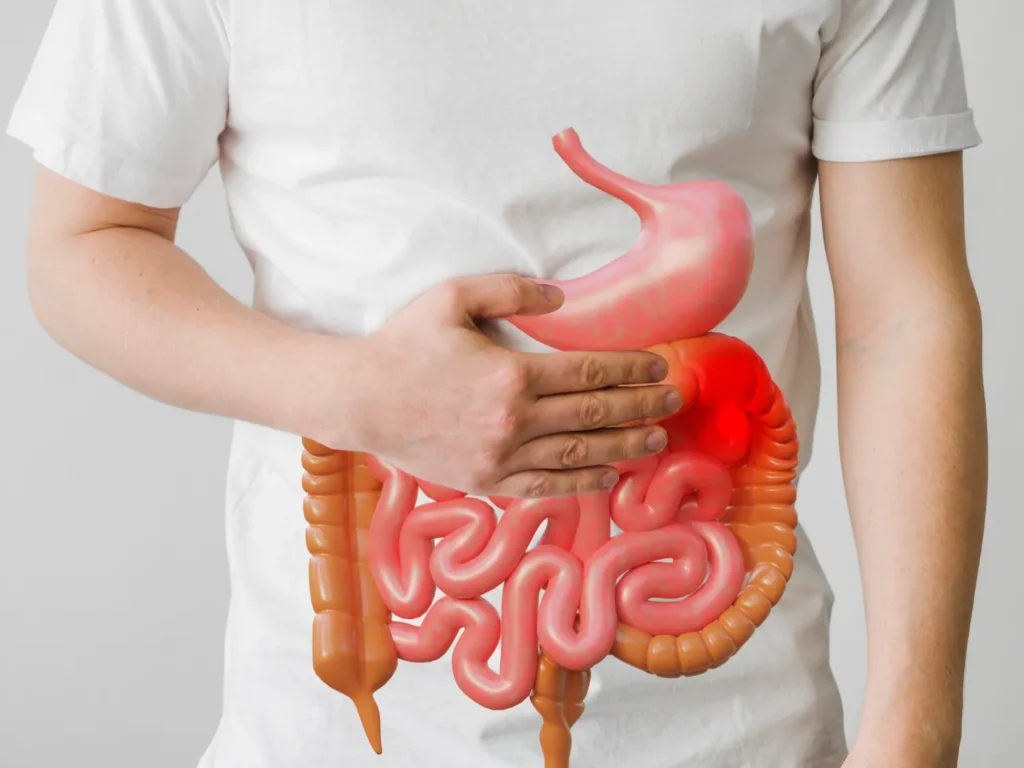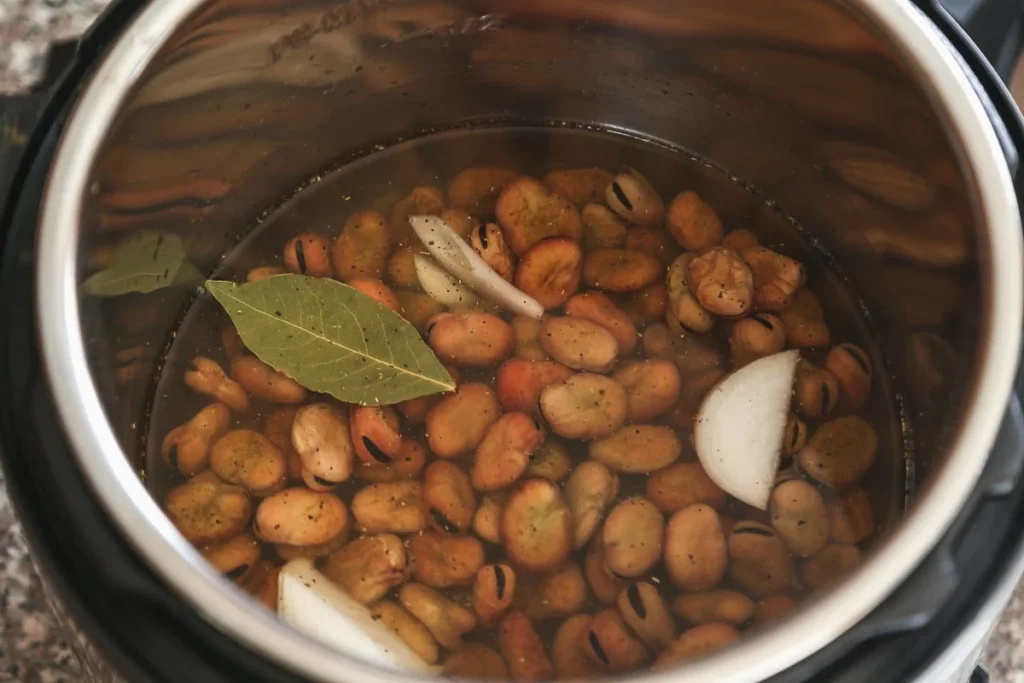
Dried fava beans, once relegated to niche corners of grocery stores, are experiencing a resurgence in popularity. This humble legume not only offers a plethora of culinary possibilities but also boasts impressive health benefits. In this article, we will explore various aspects of dried fava beans, from delectable recipes and cooking methods to their cultural significance and nutritional value.
RELATED POST: What Are Fava Beans: 10 Health Benefits of Fava Beans
What Are Dried Fava Beans
Dried fava beans, also known as broad beans, have been a staple in various recipes for centuries. These nutrient-packed legumes are not only delicious but also versatile, making them a kitchen essential.
Dried Fava Beans Nutrient Chart:
Nutrient Chart
| Nutrient | Amount per 100g |
|---|---|
| Calories | 341 |
| Protein | 26g |
| Carbohydrates | 58g |
| Dietary Fiber | 25g |
| Sugars | 1.5g |
| Fat | 1.5g |
| Saturated Fat | 0.2g |
| Monounsaturated Fat | 0.4g |
| Polyunsaturated Fat | 0.4g |
| Omega-3 Fatty Acids | 0.1g |
| Omega-6 Fatty Acids | 0.3g |
| Vitamin A | 2 IU |
| Vitamin C | 1.4mg |
| Vitamin K | 5.4µg |
| Vitamin B6 | 0.3mg |
| Folate | 177µg |
| Calcium | 103mg |
| Iron | 2.8mg |
| Magnesium | 192mg |
| Phosphorus | 421mg |
| Potassium | 1062mg |
| Sodium | 13mg |
| Zinc | 2.5mg |
Dried Fava Beans Health Benefits
In recent years, dried fava beans have experienced a remarkable surge in popularity, capturing the attention of food enthusiasts and health-conscious individuals alike. This newfound recognition is not arbitrary; it’s propelled by a growing awareness of the remarkable nutritional benefits packed within these unassuming legumes.
a. Heart Health

Incorporating dried fava beans into your regular diet can be a savvy choice for promoting heart wellness, offering a range of cardiovascular benefits. Let’s delve into why these unassuming legumes are becoming a heart-healthy staple for many.
1. Cholesterol Management: Dried fava beans significantly manage cholesterol levels, a crucial factor in maintaining heart health. These beans contain soluble fiber, which acts as a sponge in the digestive tract, binding to cholesterol and aiding its elimination from the body. By reducing the absorption of cholesterol, dried fava beans contribute to a healthier lipid profile, lowering the risk of cardiovascular diseases.
2. Rich in Heart-Healthy Nutrients in Dried Fava Beans: Dried fava beans are a nutritional powerhouse, packed with nutrients beneficial for heart health. They are a rich source of potassium, a mineral essential for maintaining blood pressure levels. Adequate potassium intake helps counteract the effects of sodium, contributing to balanced and heart-friendly blood pressure.
Moreover, fava beans are loaded with magnesium, another vital mineral for cardiovascular health. Magnesium is involved in maintaining a steady heartbeat and supporting the relaxation of blood vessels, promoting optimal blood flow.
3. Antioxidants In Dried Fava Beans: Antioxidants found in dried fava beans play a key role in protecting the heart. These compounds help neutralize free radicals in the body, reducing oxidative stress. By mitigating oxidative stress, antioxidants contribute to the prevention of inflammation and damage to blood vessels, thus lowering the risk of heart-related issues.
4. Fiber for Heart-Friendly Digestion: The fiber content in dried fava beans not only aids in digestive health but also indirectly supports heart wellness. A healthy digestive system contributes to overall well-being, preventing conditions that may strain the cardiovascular system. Additionally, a fiber-rich diet is linked to a lower risk of heart disease, making dried fava beans an excellent choice for those prioritizing heart health.
SUMMARY: Dried fava beans are a heart-healthy addition to your diet, contributing to cholesterol management, providing heart-friendly nutrients, providing antioxidant protection, and promoting overall cardiovascular well-being. By making these nutrient-packed legumes a regular part of your meals, you’re not just indulging in delicious dishes, you’re also boosting your heart health.
b. Digestive Health

Dried fava beans emerge not just as a culinary delight but as a digestive ally, thanks to their impressive fiber content. This dietary fiber, a key component of these legumes, plays a pivotal role in supporting a healthy gut and aiding in digestion.
1. Promoting Gut Health: The fiber in dried fava beans acts as a prebiotic, fostering the growth and activity of beneficial gut bacteria. This, in turn, contributes to a flourishing and balanced gut microbiota. A well-balanced gut microbiome is linked to various health benefits, including improved digestion and a strengthened immune system.
2. Enhancing Digestive Regularity: The soluble and insoluble fiber in dried fava beans adds bulk to the stool, promoting regular bowel movements. This helps prevent constipation and ensures the smooth passage of food through the digestive tract, contributing to overall digestive well-being.
3. Managing Weight and Blood Sugar: The fiber content also aids in weight management by promoting a feeling of fullness and reducing overall calorie intake. Additionally, it plays a role in regulating blood sugar levels, making dried fava beans a sensible choice for individuals looking to manage or prevent diabetes.
4. Alleviating Digestive Discomfort: For those prone to digestive discomfort, the gentle fiber in dried fava beans can provide relief. It supports a healthy and balanced digestive environment, reducing the likelihood of issues such as bloating and indigestion.
SUMMARY: The fiber-rich profile of dried fava beans makes them a digestive dynamo. From promoting gut health to enhancing digestive regularity and managing weight, these legumes offer a multifaceted approach to digestive well-being. Including dried fava beans in your diet not only elevates your culinary experience but also nurtures the health of your digestive system.
c. Weight Management

Dried fava beans emerge as a valuable ally in the realm of weight management, owing to their exceptional protein and fiber content. These nutrient-packed legumes offer a multifaceted approach to achieving and maintaining a healthy weight.
1. Satiety Through Protein: The high protein content in dried fava beans contributes to a prolonged feeling of fullness, promoting satiety. Including protein-rich foods in your diet is crucial for managing weight, as it reduces overall calorie consumption by curbing unnecessary snacking and overeating.
2. Fiber’s Weight-Regulating Effect: The fiber in dried fava beans plays a pivotal role in weight management. Acting as a bulking agent, it adds volume to the diet without contributing excess calories. This not only aids in digestion but also creates a sense of fullness, preventing excessive calorie intake and supporting weight loss or maintenance.
3. Low-Calorie Nutrient Density: Dried fava beans offer a low-calorie yet nutrient-dense option for those conscious of their weight. The combination of protein, fiber, and essential nutrients ensures that you get nutritional value without compromising on calorie intake.
4. Blood Sugar Regulation: The fiber content in dried fava beans also plays a role in regulating blood sugar levels. By preventing rapid spikes and crashes in blood sugar, these legumes contribute to stable energy levels, reducing the likelihood of cravings for sugary or high-calorie snacks.
Incorporating into Your Diet for Weight Wellness:
Integrating dried fava beans into meals is a simple yet effective strategy for weight management. Whether added to salads, used in main dishes or enjoyed as a snack, their versatility makes them an easy and satisfying addition to your diet.
SUMMARY: Dried fava beans stand out as a wholesome companion in the journey of weight management. Their protein and fiber content, coupled with low-calorie nutrient density, make them an excellent choice for those striving to achieve and maintain a healthy weight. By incorporating these nutrient-packed legumes into your diet, you not only embark on a flavorful culinary adventure but also embrace a sustainable approach to weight wellness.
How to Cook Dried Fava Beans

Cooking dried fava beans is a culinary adventure that begins with the crucial step of soaking and preparing. This process lays the foundation for a smooth cooking experience, unlocking the potential of these nutrient-packed legumes.
Soaking and Preparing
Before diving into the cooking process, proper soaking is essential. Begin by rinsing the dried fava beans under cold water to remove any impurities. Submerge them in a bowl of water and let them soak for at least 8 hours or overnight. This softens the beans, reducing the overall cooking time and ensuring a tender texture.
Cooking Methods (Stovetop, Pressure Cooker, Slow Cooker)
The versatility of dried fava beans extends to various cooking methods, allowing you to choose based on your preference and time constraints.
1. Stovetop Cooking:
- Drain the soaked beans and rinse them.
- Place them in a pot and cover with water or broth.
- Bring to a boil, then reduce heat and simmer until beans are tender.
- This traditional method offers a hands-on approach, allowing you to monitor the beans’ progress.
2. Pressure Cooker:
- Follow the soaking process.
- In the pressure cooker, combine soaked beans and water or broth.
- Cook under pressure for a quicker cooking time, perfect for busy schedules.
- The pressure cooker retains flavors and nutrients, yielding delicious results.
3. Slow Cooker:
- After soaking, transfer the beans to the slow cooker.
- Add water or broth and set the cooker to low heat.
- Slow cooking enhances flavors, producing rich and well-developed taste profiles.
- Ideal for those who prefer a hands-off approach to cooking.
Tips for Perfectly Cooked Dried Fava Beans
Achieving the perfect texture is an art, and a few tips can elevate your dried fava bean dishes:
- Seasoning: Add aromatics like garlic, herbs, or spices during cooking for enhanced flavor.
- Check for Doneness: Beans should be tender but not mushy. Taste-test to ensure the desired texture.
- Salt at the End: Adding salt at the beginning may toughen the beans. Season towards the end of cooking.
SUMMARY: Embark on your culinary journey with dried fava beans, exploring these soaking, cooking, and tips for perfecting your dishes. Whether you opt for the stovetop, pressure cooker, or slow cooker method, each promises a unique and delightful outcome. Elevate your cooking skills and savor the wholesome goodness of perfectly cooked dried fava beans.
Frequently Asked Questions (FAQ’s)
1. Are dried fava beans good for you?
Yes, dried fava beans are exceptionally good for you. Packed with protein, fiber, and essential nutrients, they contribute to heart health, weight management, and overall well-being. Their versatility in cooking makes them a nutritious addition to a balanced diet.
2. What are dried fava beans called?
Dried fava beans are also commonly referred to as “dried broad beans” or simply “dried favas.”
3. Do dried fava beans need to be soaked?
Yes, dried fava beans require soaking before cooking. This essential step, typically done for at least 8 hours or overnight, not only softens the beans but also reduces cooking time. The process ensures a more efficient and enjoyable culinary experience, yielding perfectly tender and flavorful results.
4. Is it safe to eat fava beans every day?
Yes, it’s generally safe to eat fava beans every day as part of a balanced diet. However, individuals with G6PD deficiency should avoid them due to the risk of hemolysis. As with any food, moderation is key to ensuring a diverse and nutritious intake.
5. When should I avoid fava beans?
Avoid fava beans if you have G6PD deficiency, as they can trigger hemolysis. Additionally, if you’re on MAOI medication, consult your healthcare provider, as fava beans may interact. Always check for allergies and consume in moderation as part of a varied diet.

